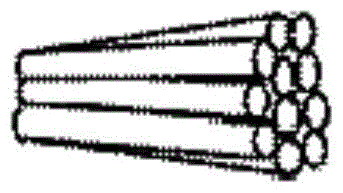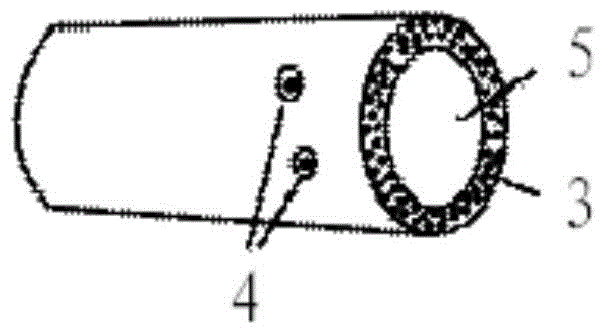Biomechanical model of human brain arteriovenous malformation and its construction method in vitro
An arteriovenous malformation and model technology, applied in the field of cerebrovascular disease experimental research in basic medicine, can solve the problem of difficulty in clarifying the coupling mechanism of vascular endothelial cell force-biochemical signal, inability to vascular biology, and inability to detect the influence of hydrodynamic changes on cytokine expression. and other problems to achieve the effect of repeatable experimental conditions and controllability
- Summary
- Abstract
- Description
- Claims
- Application Information
AI Technical Summary
Problems solved by technology
Method used
Image
Examples
Embodiment 1
[0024] Example 1: Using the method of the present invention to observe the influence of hydrodynamic changes on the expression of vascular endothelial growth factor in human cerebral arteriovenous malformation.
[0025] Fresh specimens of surgically resected human brain arteriovenous malformations were rinsed with normal saline, and the adventitia of the malformed blood vessels was stripped off longitudinally, cut into 1.5mm under a microscope 2 Vascular tissue pieces, endothelial side down, stick to the bottom of the culture bottle, place in a 37°C incubator for 10 minutes, and then add M along the wall of the bottle 199 (Gibco BRL) culture medium at 37°C, volume fraction 0.05CO 2 cultured in an incubator. After the endothelial cells adhered to the wall, the D-Hanks solution was used to wash and remove the tissue pieces and non-adhered cells. Under the microscope, the cell brush scraped off the smooth muscle cells and fibroblasts, and the adherent cells continued to be cultu...
Embodiment 2
[0031] Example 2: Using the method of the present invention to observe the influence of hydrodynamic changes on the expression of human brain microvascular endothelial cell growth factor.
[0032] Collect the fresh cerebral cortex around the malformed blood vessels, mechanically grind and filter with microporous nylon mesh, collect the microvascular segments on the net, digest with collagenase, centrifuge and precipitate the microvascular segments, add cell growth medium to dilute, and then plant them in gelatin-covered culture flasks. Place in a 37°C incubator and incubate for 1 hour, and replace the culture medium so as to remove the microvessel segments that fail to adhere to the wall. In order to make the endothelial cells grow well, the primary stage is catalyzed by endothelial cell growth additives.
[0033] Using fibronectin (5.0 μg / cm 2 ) coated the lumen surface of the human brain microvessel model, and after 24 hours, added M to the lumen 199 (Gibco BRL) culture me...
PUM
 Login to View More
Login to View More Abstract
Description
Claims
Application Information
 Login to View More
Login to View More - R&D
- Intellectual Property
- Life Sciences
- Materials
- Tech Scout
- Unparalleled Data Quality
- Higher Quality Content
- 60% Fewer Hallucinations
Browse by: Latest US Patents, China's latest patents, Technical Efficacy Thesaurus, Application Domain, Technology Topic, Popular Technical Reports.
© 2025 PatSnap. All rights reserved.Legal|Privacy policy|Modern Slavery Act Transparency Statement|Sitemap|About US| Contact US: help@patsnap.com



